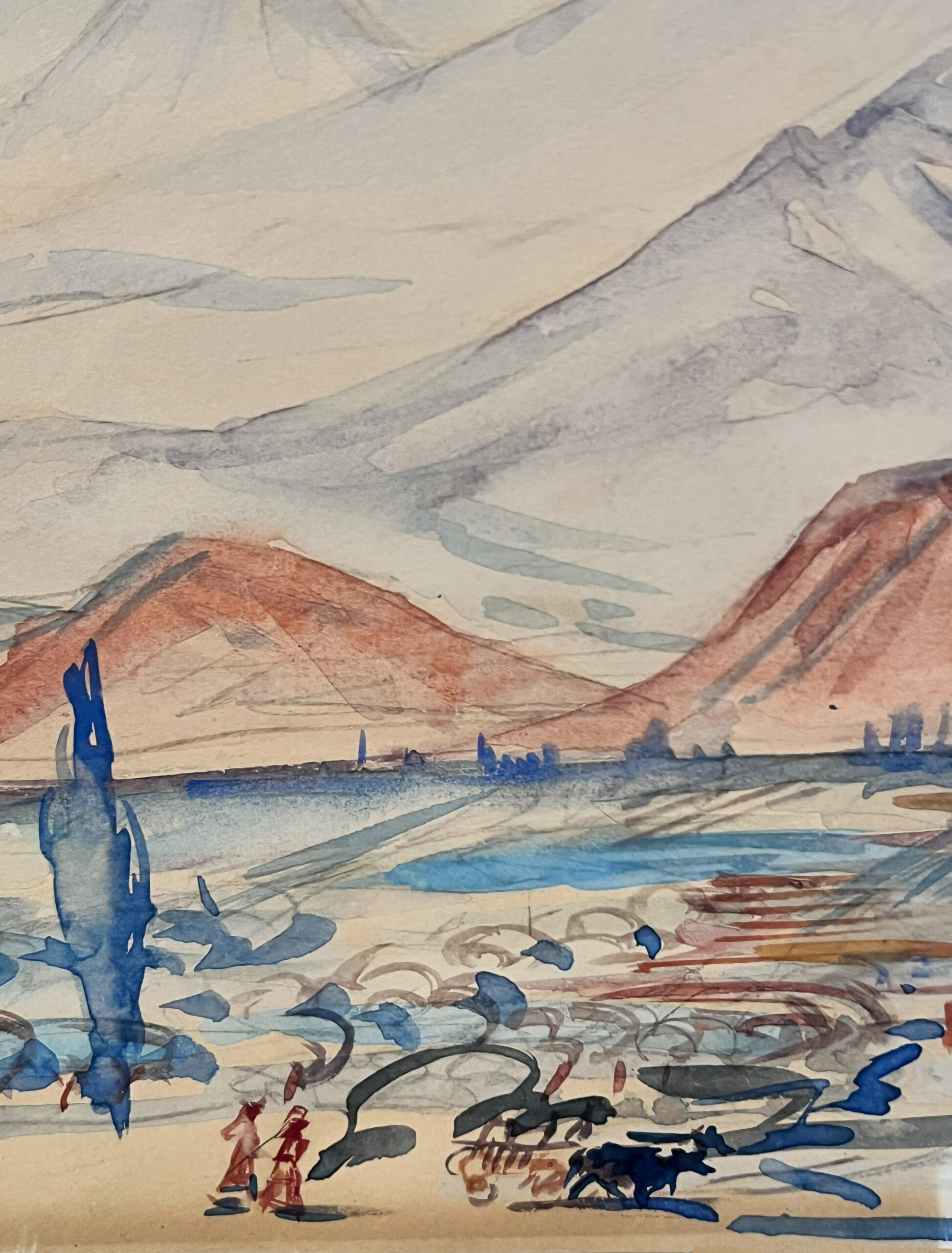Ararat valley
10.75″ x 15.25″; 27.5×38.5cm
Watercolor on paper.
Signed lower right.
Year: 1945
Available
INQUIRY
Martiros Saryan
Martiros Saryan (1880-1972): A Biography
Early Life and Education
Martiros Saryan was born on February 28, 1880, in Nakhichevan-on-Don, a city in the Russian Empire, now part of Rostov-on-Don, Russia. His family was of Armenian descent, and his cultural heritage played a significant role in shaping his artistic vision. From a young age, Saryan exhibited a talent for art, and in 1897, he moved to Moscow to pursue formal training at the Moscow School of Painting, Sculpture and Architecture. Here, he studied under the guidance of renowned artists such as Konstantin Korovin and Valentin Serov, who influenced his early development.
Artistic Career
Saryan’s early work was characterized by his use of vivid colors and his interest in capturing the beauty of nature. He was deeply inspired by the landscapes of Armenia, which became a recurring theme in his work. In 1901, he made his first trip to Armenia, which profoundly impacted his artistic direction. The vibrant landscapes, cultural richness, and historical depth of Armenia became central motifs in his paintings.
In the early 1900s, Saryan’s style began to mature, and he became associated with the Russian Symbolist movement. His works from this period, such as “Fairy Tale” (1904) and “The Enchanted Lake” (1905), showcased his fascination with folklore and mythical themes. However, his distinct style, characterized by bold colors and simplified forms, set him apart from his contemporaries.
Paris and International Recognition
In 1910, Saryan traveled to Paris, where he was exposed to the works of the Post-Impressionists and the Fauves. The influence of artists like Paul Gauguin and Henri Matisse can be seen in Saryan’s use of color and form. During his time in Paris, he participated in several exhibitions, gaining international recognition for his unique approach to painting.
Return to Armenia
In 1921, Saryan moved to Armenia, which had recently become a part of the Soviet Union. This move marked a new chapter in his career. He embraced his Armenian roots more deeply, dedicating himself to depicting the landscapes, people, and culture of his homeland. His works from this period, such as “Mount Ararat” and “Armenian Village,” are celebrated for their vivid portrayal of Armenian life and nature.
Saryan also played a significant role in the cultural life of Armenia. He served as the director of the State Museum of Armenia and was involved in various artistic and cultural initiatives. Despite the political challenges of the time, Saryan’s work remained focused on the beauty and resilience of the Armenian spirit.
Later Years and Legacy
Martiros Saryan continued to paint until his death on May 5, 1972. His legacy is preserved in the Martiros Saryan House-Museum in Yerevan, Armenia, which houses many of his works and personal artifacts. Saryan’s influence extends beyond his paintings; he is considered a national treasure in Armenia, and his contributions to art and culture are celebrated worldwide.
Saryan’s work is distinguished by its emotional depth, vibrant color palette, and deep connection to his Armenian heritage. His paintings not only capture the physical beauty of Armenia but also convey a sense of spiritual and cultural identity. Through his art, Saryan has left an enduring legacy that continues to inspire and resonate with audiences today.
4o




